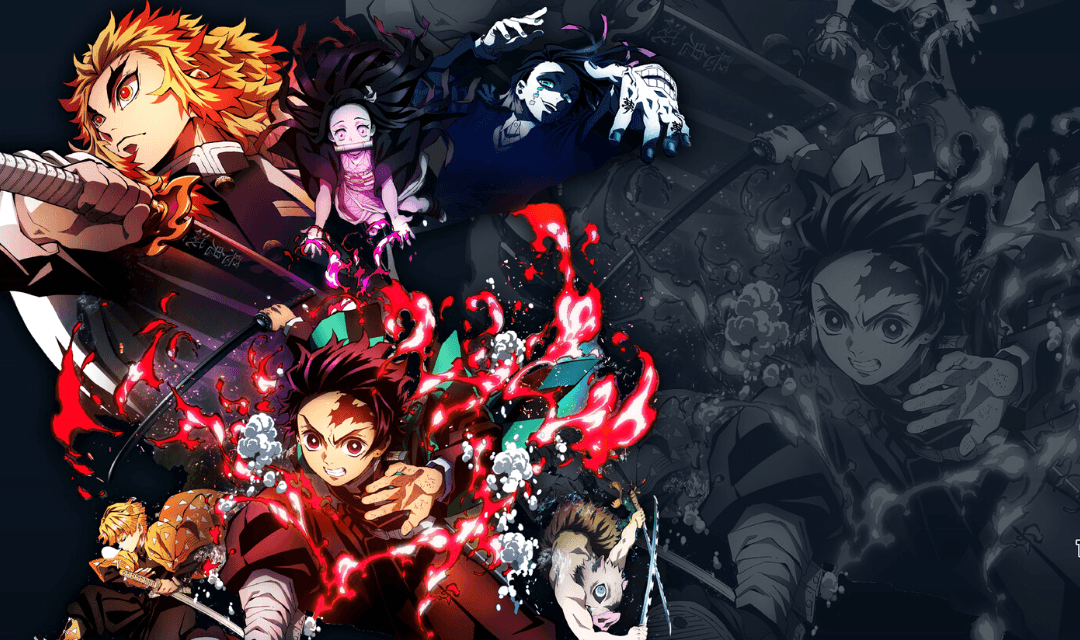In 2001, Spirited Away became the highest-grossing Japanese film of all time. Twenty years later, in the midst of the pandemic, another Japanese release emerged and toppled Spirited Away’s box office record. This film wasn’t a critical darling or the work of an esteemed auteur. It wasn’t even a standalone film. It was a transitional installment of the anime series Demon Slayer (2019–), fitting right between seasons one and two. This 1-hour and 57-minute bridge story made more than 500 million dollars worldwide. The film’s American success is almost entirely due to the popularity of season one, streamed on Netflix at the height of the pandemic. In 2001, Spirited Away made $13.7 million in the US. In 2021, Mugen Train made $49.5 million stateside. 20 ago anime was still a niche interest for a small set of avid American fans. Now it is pervasive. Many people in older generations may not realize exactly how popular anime is with younger viewers, but, it is very popular. When students are asked what their favorite films are. Often they can’t think of one, but ask, “Can I tell you what my favorite anime is?” While American animation tends to target children, anime is often unexpectedly (and sometimes distressingly) adult to Western eyes. It also draws on vibrant narrative art (manga), which provides a depth of worldbuilding and storytelling often unavailable to Western animation. Demon Slayer: Kimetsu no Yaiba began as a popular manga in 2016. It tells the story of Tanjiro Kamado, a humble woodsman, who provides for his fatherless family by selling charcoal down the mountain in the local village. In the first episode, he returns to find his family killed by a demon. The only survivor of the attack is his sister Nezuko who has been transformed into a demon with a thirst for blood. Rather than killing Nezuko, Tanjiro tames his sister through his hopeful compassion for her, and resolves to find a way to restore her humanity. The series follows Tanjiro as he trains as a demon slayer and seeks a cure for Nezuko. The eponymous monsters of Demon Slayer bear little resemblance to the evil spirits of Christian theology. They are more like the oni of Japanese folklore, wicked or dangerous creatures haunted by the pains of the former human lives.
This Postmodern Realities episode is a conversation with JOURNAL author Phil Tallon about his online-exclusive article, “Slaying and Redeeming Demons: Understanding the Anime Film Demon Slayer”.
Locked articles are online exclusive content that are only available to subscribers. There are three subscription options to access our online exclusive content.
1. Subscribe ($33.50) to the print edition of the Christian Research Journal which includes all online exclusive content.
2. Pay a monthly fee ($4.99) for Christian Research Journal online exclusive content. This does not include online versions of current print edition articles or receiving the print issues.
3. Pay an annual fee ($24.99) for Christian Research Journal online exclusive content. This does not include online versions of current print edition articles or receiving the print issues.
For more information and to subscribe please click here.
Note online-exclusives are eventually made available to the public at regular intervals but to gain access to read it when it’s originally posted subscribing at the link above is the best option.
When you to subscribe to the Journal, you join the team of print subscribers whose paid subscriptions help provide the resources at equip.org that minister to people worldwide. These resources include our ever growing database of over 1,500 articles, as well as our free Postmodern Realities podcast.
Another way you can support our online articles is by leaving us a tip. A tip is just a small amount, like $3, $5, or $10 which is the cost for some of a latte, lunch out, or coffee drink. To leave a tip, click here
Other articles podcasts featuring this author:
Zombie Movies:
Episode 300: Our Own Worst Enemy: Zombie Movies and the Horror of Human Sin
Our Own Worst Enemy: Zombie Movies and the Horror of Human Sin
Sherlock Holmes
Episode 243: The Fall of Sherlock: Investigating the Victorian Detective in a Modern Age
The Fall of Sherlock: Investigating the Victorian Detective in a Modern Age
Revenge Movies:
Episode 225: Wild Justice: Why Do We Love Revenge Movies?
Wild Justice: Why Do We Love Revenge Movies?
The Mandalorian
Episode 217: Thinking About Religion in The Mandalorian
This is the Way…Or is It?: Thinking About Religion in The Mandalorian
Tenet
Time May Change Me, But I Can’t Change Time: Reversing Time to Understand Christopher Nolan’s Tenet
A Hidden Life
Episode 155 The Marathon of Martyrdom: A Review of A Hidden Life
The Marathon of Martyrdom: A Review of A Hidden Life
Star Wars: Rise of Skywalker
Episode 154: The Dead Won’t Stop Talking: A Review of The Rise of Skywalker
The Dead Won’t Stop Talking: A Review of The Rise of Skywalker
Fred Rogers and Mr. Rogers Neighborhood:
The Eternal Importance of Being Awkwardly Earnest: A Review of “A Beautiful Day in the Neighborhood”
Steven Spielberg Movies:
Episode 139 Clear Skies, Hurt Hearts, Can’t Lose: Why Spielberg’s Aliens Help Make us More Human
Clear Skies, Hurt Hearts, Can’t Lose: Why Spielberg’s Aliens Help Make us More Human
Tolkien
Episode 123 Tolkien’s First Fellowship
Tolkien’s First Fellowship A film review of Tolkien
Alfred Hitchcock films:
Episode 100: A. Hitchcock Films
The Coen Brother’s Films:
Episode 050: O Father, Where Art Thou? The Coen Brothers and the Riddle of Existence
“O Father, Where Are Thou? The Coen Brothers and the Riddle of Existence
The Films of Quentin Tarantino:
